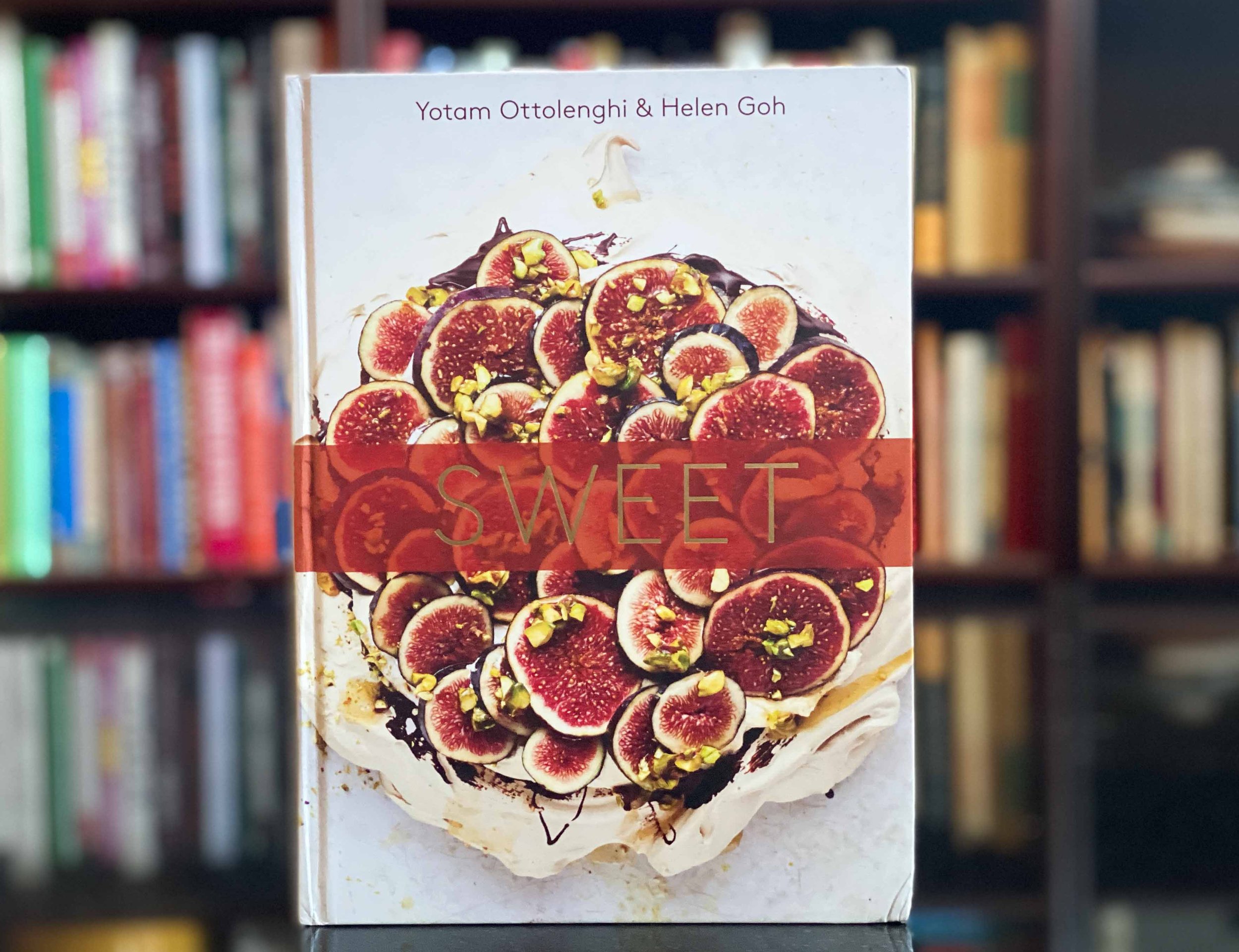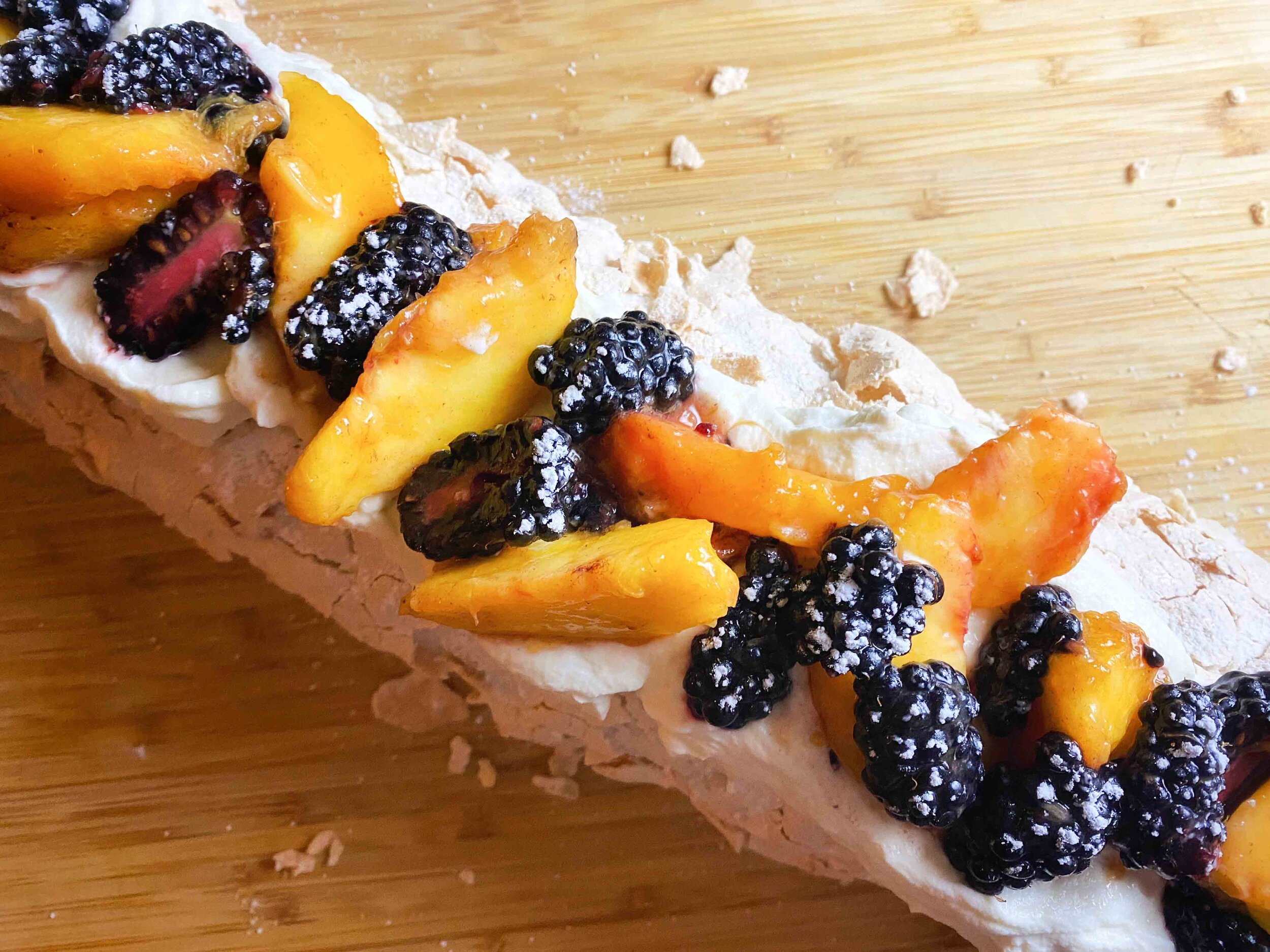By Leslie Brenner
One evening fifteeen years ago, when I was living in Los Angeles, my friend Jenni wowed me at dinner with a magnificent dessert: a cloud-like pouf of meringue, crunchy on the outside and soft-chewy in the center, topped with a glorious mess of berries snuggled on a cushion of whipped cream and scattered with toasted chopped pistachios.
My spring and summer desserts would never be the same.
The dessert, called a Pavlova, has a down-under pedigree, invented about a hundred years ago, either in Australia or New Zealand (it’s unclear which), where it first showed up laden with strawberries, kiwis and passion fruit. It was named for the Russian prima ballerina Anna Pavlovna Pavlova, who visited both countries in the 1920s. My friend Jenni, born and raised in South Africa, had fallen in love with the dessert there as a young girl.
When Jenni feted us with one back in 2007, Pavlovas were something you’d usually only see in restaurants (if you saw one at all) and probably mostly on the coasts, in New York, San Francisco or L.A. But those restaurant versions were small, smooth, perfect and formal-looking — nothing like that wild, craggy, irresistible mess I fell in love with at Jenni’s.
The cake that launched the Ottolenghi empire
Since then, Pavlovas’ popularity has grown — fueled in no small part by London chef Yotam Ottolenghi, whose 2017 cookbook Sweet (co-authored by Helen Goh) features on its cover a magnificent full-sized cinnamon version slathered with praline cream and covered with gorgeous slices of ripe figs and pistachios. Sweet!
In fact, spectacular lofty Pavlovas were essential in launching Ottolenghi’s restaurant and global cookbook empire. For his first professional kitchen job, as the Israeli-born chef tells us in the introduction to Sweet, he spent much of his time whipping egg whites for vanilla soufflés. And then, he writes:
“I ended up making my name on egg whites, sugar and lots and lots of air. The famously giant Ottolenghi meringues, which have adorned our windows for many years, have become our trademark.”
When it comes to busy home cooks, Pavlovas have a wealth of advantages. Surprisingly easy to make, they’re not only impressive and dramatic, but also forgiving — as their vibe is abundantly fruity and disheveled. Perfection is not required, nor even recommended.
Whipped meringue disc, ready to go into the oven
The Pavlova’s foundation is a thick disc of meringue — which you make by beating egg whites and sugar until stiff, spreading on a parchment-lined baking sheet, and baking slowly. As it cools, it becomes crisp on the outside and soft on the inside. Use that time to macerate fruit. Whip some cream, slather it on the meringue, top with fruit, add enhancements like nuts (if desired), and voilà.
The baked meringue disc: Don’t worry; it’s not supposed to be perfect! The crags and crannies will catch the whipped cream and fruit juice.
Pavlovas are adaptable — make them full-size, individual, or anything in-between, and top them with whatever fruit is available and great-looking. You can flavor the meringue with extracts, liqueurs, spices or chocolate, or play with their texture by using brown sugar (as Ottolenghi does in his cinnamon-flavored fig and pistachio Pavlova).
This time of year, as strawberries are coming into season (no doubt they’re already resplendently displayed in Southern California on the beloved Harry’s Berries stand at Santa Monica Farmer’s Market), I like to make simple small ones featuring the juicy red fruit. (Happy spring!)
For the one shown here, I macerated the berries in orange liqueur and used them to adorn individually sized meringues. Want to dress them up a little more? Sprinkle on a little citrus zest and finish with toasted sliced almonds. They’re just the thing for spring holidays, like Easter or Mother’s Day. And if you’re looking for a flour-free dessert for Passover, look no further! (Which means yes, they’re gluten-free.)
Of course a full-on assortment of berries — blackberries, raspberries, strawbs and blueberries, as shown in the photo at top on a full-size Pavlova — is wonderful, too.
In summer, once stone fruits come into play, peaches, plums and apricots dance delightfully atop meringues. Or they can even get rolled up into them, as in this inventive spin by the Pavlova master himself, Ottolenghi.
To achieve that one, you make a meringue that’s rectangular rather than round. Spread a filling of whipped cream, berries, peaches and toasted sliced almonds on top, and roll it up. Yes, it probably sounds crazy if you’ve ever made meringues, but it works. Then more fruit goes on top, with a dusting of powdered sugar. Served in slices, it’s crazy good.
One of the glorious things about Pavlova season is that it’s luxuriously long. Late summer and fall, you could make make Ottolenghi’s sliced fig number. Or mix it up with late-season plums, or persimmons, or some roasted grapes. Toasted walnuts would be lovely on that.
But for now, we have spring, with all its delicious possibility. My recommendation for making most of the season? Get all messy with meringues and fruit and treat yourself (and friends and family, of course!) to one.
RECIPE: Berry Pavlova with Pistachios
RECIPE: Showstopper Rolled Pavlova with Peaches and Blackberries
Read: “Messy, gorgeous and dramatic: The berry Pavlova is a spring-into-summer stunner”







